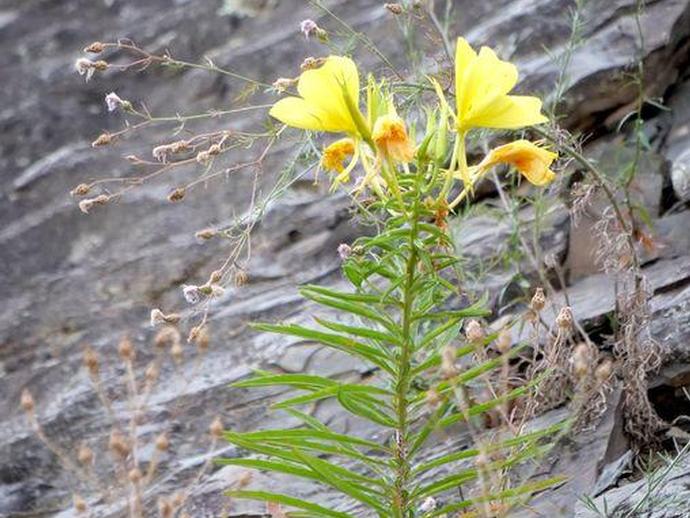August 17, 2021
Ben here with today's edition of #BenInNature presented by our friends at Carter Bank & Trust!
While we visited tunnels and caves on our recent museum trip to Alleghany County and Giles County, we also found some neat specimens out in broad daylight; for example, Oenothera biennis, also known as common evening primrose!
We found a ton of these plants growing on a shale slope, which isn't too surprising. These plants prefer sunny, dry conditions, and the seeds require light to germinate. The flowers bloom in the evenings from spring to late summer, and once bloomed, each flower only lasts until around noon the following day!
Evening primrose was used by indigenous tribes in North America for centuries as both food and medicine. Nearly every part of the plant is edible. The roots can be eaten raw or cooked like potatoes, and the leaves can be eaten raw in salads or cooked like spinach. The flower buds are supposed to be the tastiest part of the plant, and the flowers are also edible and supposedly have a sweet taste. The seeds are high in proteins and several amino acids, and for this reason, oil made from evening primrose seeds is commonly sold as a dietary supplement. Scientific evidence suggests that evening primrose oil doesn't actually do a whole lot, although it may increase the risk of bleeding in patients with bleeding disorders. For this reason, I recommend (as always) that readers out there be extremely careful when it comes to consuming wild plants.
ABOUT #BenInNature
Social distancing can be difficult, but it presents a great opportunity to become reacquainted with nature. In this series of posts, Administrator of Science Ben Williams ventures outdoors to record a snapshot of the unique sights that can be found in the natural world. New updates are posted Monday - Friday, with previous posts highlighted on the weekends. This series of posts is made possible thanks to the support of VMNH Corporate Partner Carter Bank & Trust (www.cbtcares.com).
NATURE PHOTO IDENTIFICATIONS
If you discover something in nature that you would like help identifying, be sure to message us right here on Facebook with a picture (please include location and date of picture) and we'll have our experts help you identify it!

 Hours & Admissions
Hours & Admissions Directions
Directions

